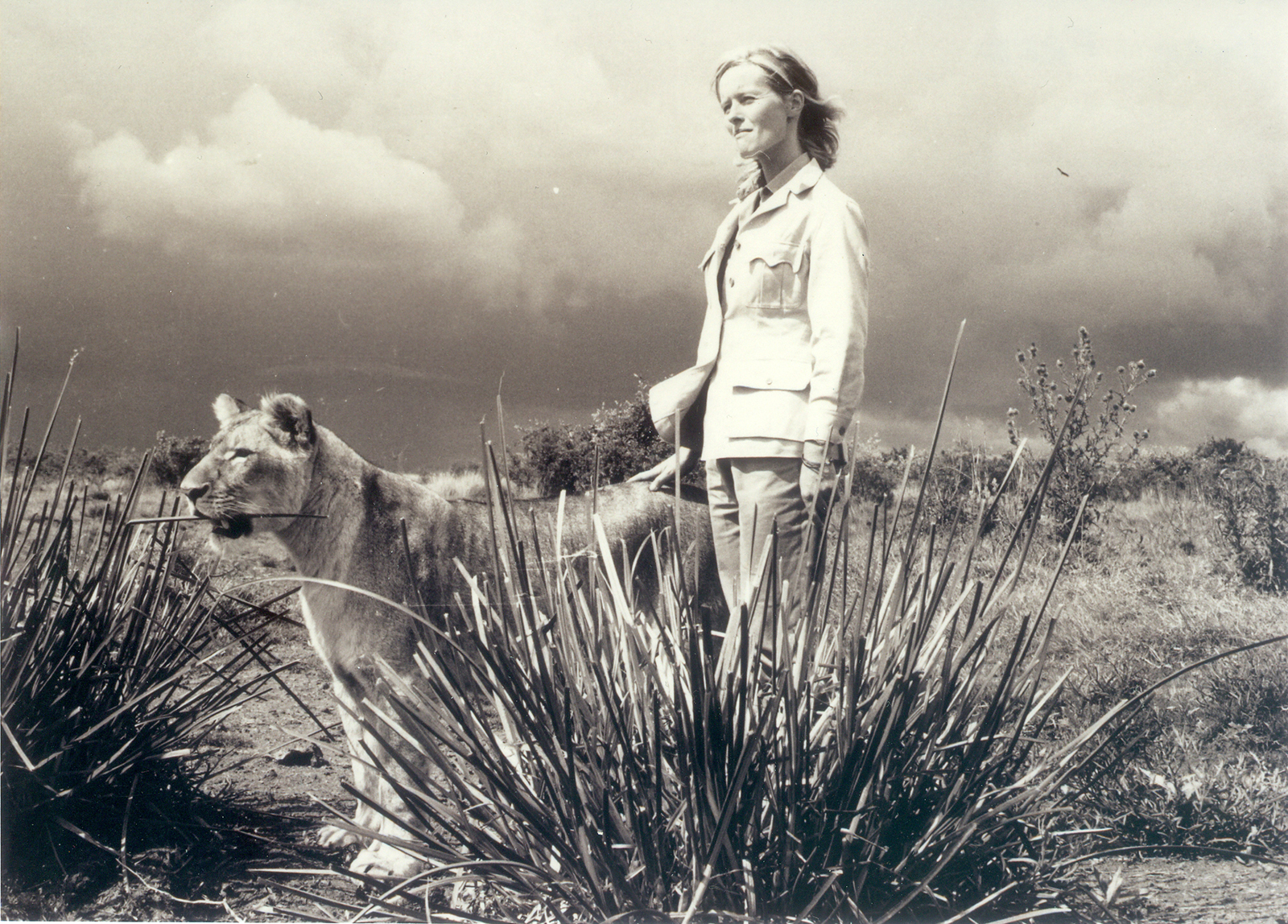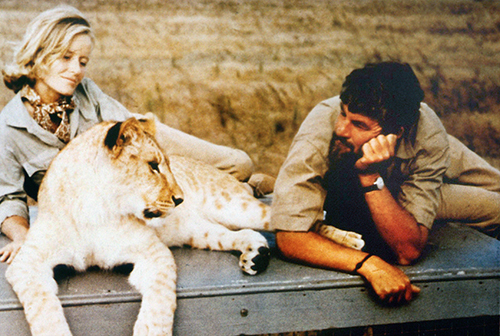The spirit of Elsa
09 November 2022
THE SPIRIT OF ELSA
Meru is where our Co-Founder Virginia McKenna OBE learned to love lions and love Africa. She considers the park’s influence on her family and explains why Elsa’s descendants need you today.

Meru County is one of the most prosperous in Kenya, known for its agriculture on fertile slopes to the northeast of Mount Kenya. However, as foothills gently give way to dry plains that stretch towards semi-deserts of the north, we are in the land of Elsa the lioness, the heartland of Born Free.
 Making the film Born Free with my late husband Bill, over nearly a year, was life changing. Working with George Adamson, meeting Joy, and retelling the most famous lion story of all time, caused us to look, listen and learn in ways we could never have imagined. And at the centre of that story was Elsa and Meru National Reserve, as it then was, today a national park. Over 300 square miles (twice the size of the Isle of Wight) of grassy plains, cool inviting forests, impenetrable thorny bush, great rocky outcrops and free-flowing rivers, Meru is home to a great diversity of wildlife. Lions, but also elephants, rhino, leopard, cheetah, hyena, buffalo, giraffe, hippo, primates, crocodiles, antelope, gazelle, and hundreds of species of birds, reptiles and insects.
Making the film Born Free with my late husband Bill, over nearly a year, was life changing. Working with George Adamson, meeting Joy, and retelling the most famous lion story of all time, caused us to look, listen and learn in ways we could never have imagined. And at the centre of that story was Elsa and Meru National Reserve, as it then was, today a national park. Over 300 square miles (twice the size of the Isle of Wight) of grassy plains, cool inviting forests, impenetrable thorny bush, great rocky outcrops and free-flowing rivers, Meru is home to a great diversity of wildlife. Lions, but also elephants, rhino, leopard, cheetah, hyena, buffalo, giraffe, hippo, primates, crocodiles, antelope, gazelle, and hundreds of species of birds, reptiles and insects.
Designated a wilderness park by our friends and colleagues at the Kenya Wildlife Service, Meru suffered a poaching epidemic in the 1980s which saw all rhino eliminated and elephant numbers tumble. However, resolute efforts are restoring this extraordinary park to former glory and a relatively small number of intrepid visitors can enjoy one of the best wildlife experiences in the country.
Born Free is there too, working in Meru since 2014. Our lion conservation team protects and monitors some 80 lions living in the park and works to reduce conflict with neighbouring communities. Our education team develops conservation learning opportunities to improve co-existence between people and wildlife. Through compassionate conservation and a close partnership with all those who share this unique landscape, Meru and the wider Meru Conservation Area can be a lion stronghold for generations to come.
Our story began in the 1960s for Bill and myself with Elsa the lioness and Joy and George Adamson. Three extraordinary individuals. Making the film Born Free had a tremendous impact and, guided by the Adamsons, we began to understand how every animal matters. George and Joy were so different, yet bound together by their commitment to wild animals being able to live as nature intended – in the wild.
Which brings us back to the Adamsons and Elsa. For beyond Meru’s natural wonders is a profound history never to be forgotten. This is where George and Joy released Elsa into the wild, where she gave birth to cubs, where she died in George’s arms from a tick-borne disease. And where she is buried in a simple grave near the site of the Adamson’s little camp, a stone’s throw from the river. People travel from all over the world to experience what Meru has to offer. They also come to pay their respects to the ‘lioness of two worlds’. It is a place that means so much to me and my son Will, to many of our colleagues, and to the wider Born Free Family that so generously and loyally supports our work.
I first went to Meru in 1965 – at Joy’s invitation – to see for myself where the Born Free story unfolded. It was an unforgettable and deeply touching experience. My latest visit was in 2019. For over half a century the spirit of Elsa and her homeland have never been far from my thoughts. Now I look to the next generation, the Born Free generation, to pick up the baton and help ensure that Elsa’s legacy, our legacy, has a bright future.
Image (c) Colombia Pictures
